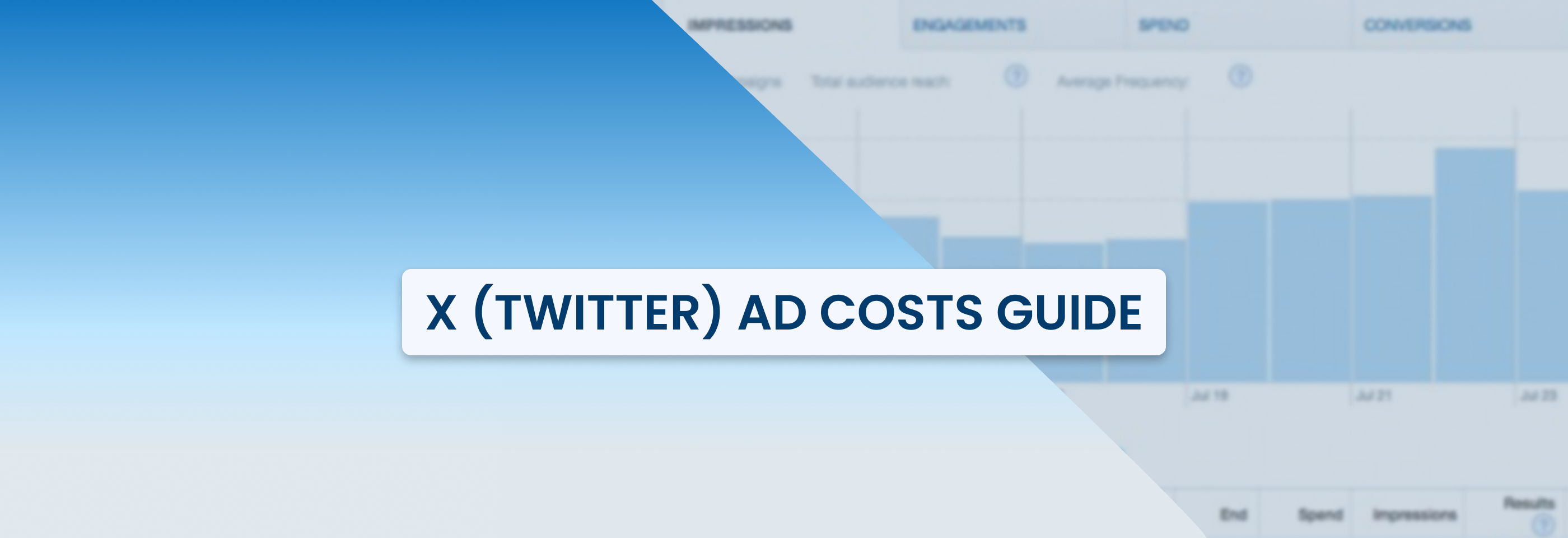How to Use Lookalike Audiences to Expand Brand Awareness
2022-07-14
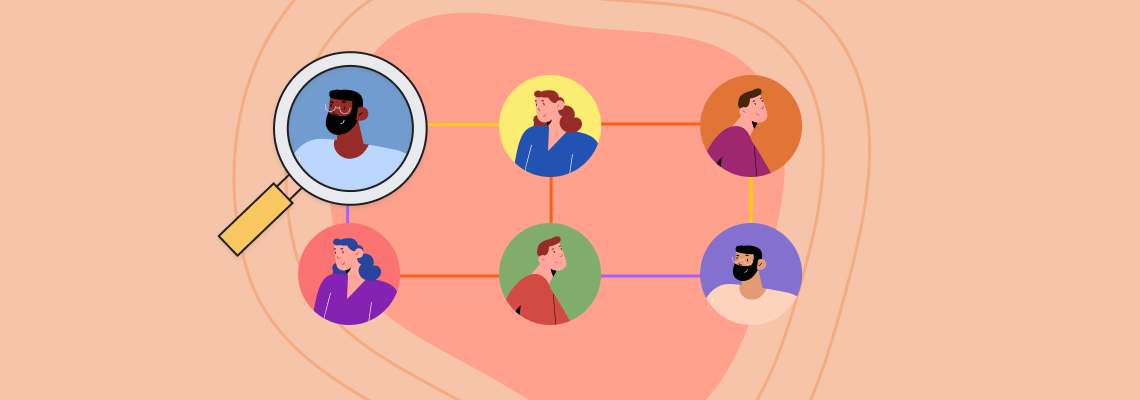
Facebook has undoubtedly become one of the most important platforms for advertising thanks to the wide range of targeting options it offers to marketers.
In case you are willing to get new high-quality leads, expand your reach, and make your brand better-known, it would be a great idea to start using lookalike audiences combined with interest-based and custom audiences in your Facebook Ads. In this article, we will scrutinize how lookalike audiences will help you boost your sales and increase brand awareness.
Types of Facebook Audiences
When it comes to Facebook ads, it is essential to set the right audience. As Facebook includes 3 types of audiences, it would be useful to thoroughly research the difference between them.
So, there are 3 types of audiences that you can use for your ad campaigns:
- Saved audience is based on the exact features of the people you want to target. Think of your average consumer and their characteristics. Based on the collected information, you can select the filters suggested by Facebook such as location, gender, age, interests, and behaviors to generate the audience. Once formed, it can be saved and used repeatedly.
- Custom audience consists of people who have already interacted with your company. As sources, you can use the lists of your own clients (in case you know their email addresses/phone numbers), visitors of your website (if you have set up Facebook Pixel), or the users that have engaged with your Facebook page or Instagram profile.
- Lookalike audience is based on already existing sources. Facebook defines the common features of the users in it, finds similar people, and creates an audience consisting of them.
These three types of audiences have their own benefits and what fits one business may work not as well for another. That is why it is sensible to try them all to compare their performance. Yet now, let’s take a closer look at lookalike audiences specifically.
What a lookalike audience is
As it is clear from the name, a lookalike audience literally looks like a source used as its basis. During the creation of a lookalike audience, Facebook analyzes the common features of the users from the source audience and finds people similar to them.
You will need to choose a source that will be used as a basis for a lookalike one, select a country where the users will be from, and set a similarity percentage.
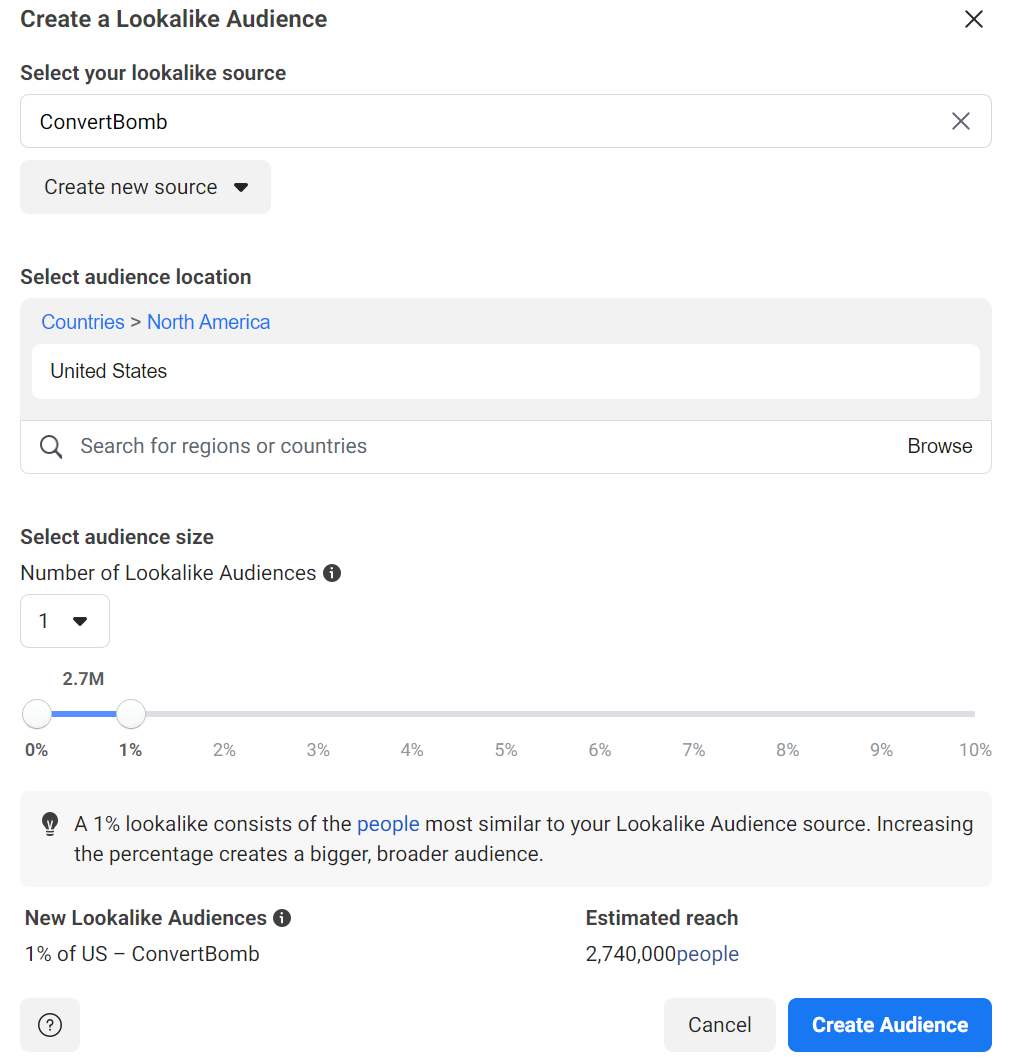
It would be great to get creative when choosing a source for the lookalike. You can use:
- your customer list with email addresses in .csv or .txt format,
- your website visitors (in case you have Facebook Pixel installed),
- people who watched your video (you will be able to set how long they need to watch it to get into the audience),
- users who engaged with your Facebook and Instagram pages,
- people who installed your app.
Testing different types of sources, you will definitely be able to find the ones that will serve as a great basis for your lookalike audiences.
People from the custom audience will not be included in the lookalike. However, you can select both audiences on the Ad Set level, thus targeting them simultaneously. Also, you are able to set multiple lookalike audiences within a single Ad Set.
In order to be used as a source for a lookalike, a Facebook custom audience must include at least 100 people from a single country. It can be any country and doesn’t have to be the one you are willing to target. For example, if there are 100 people or more only from Canada, you can still use it to create a lookalike audience for the US or any other location.
Using one source custom audience, you can create up to 500 lookalike ones. For those whose lookalike audiences perform great within their ads, this fact would be especially important.
When to use lookalike audience
Lookalike audiences may be used for various purposes. While some use them to increase their brand awareness, others prefer them to target the most exact audience.
Here are some ideas for the ways you can use them in your marketing strategy:
- Lookalike audiences are a great way to expand your customer base by targeting the people who your ads were not able to reach earlier. Your targeting options should not be limited by the custom lists you already have or by people who have interacted with your page or website. Lookalike audiences will broaden your reach allowing you to approach people with similar characteristics.
- As lookalike audiences are similar to custom audiences, they are more relevant and accurate than standard interest-based audiences. In case you are not confident that you are able to set targeting options properly and have doubts about what filters to apply, use your existing lists of prospects that are a real goldmine of information about your target audience.
- Since you are able to set the percent of similarity, you can create an audience of any size appropriate for your objectives and budget. The lower the percentage you choose, the smaller the audience will be. However, more likely, even a small lookalike audience will be sufficient for an effective ad campaign.
- You may create plenty of variations of different lookalike audiences based on different source audiences, test them against each other, and compare their performance. For instance, create a lookalike audience based on your Facebook page engagement and another one based on your website visitors. Analyzing the lookalike audiences' performance will also shed light on the quality of their sources.
How to create lookalike audience on Facebook
If we have convinced you to start using lookalike audiences in your ads, this is what you need to do now:
First, proceed to your Facebook Business Manager -> Audiences -> Create Audience -> Lookalike Audience.
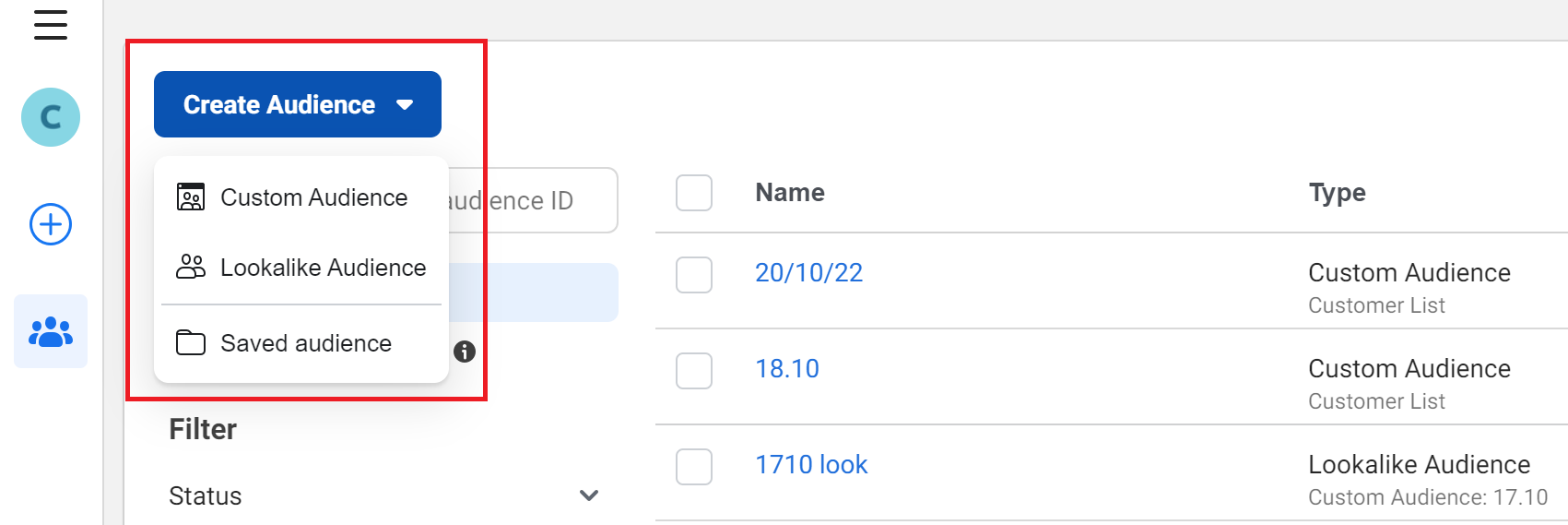
You will see the following steps:
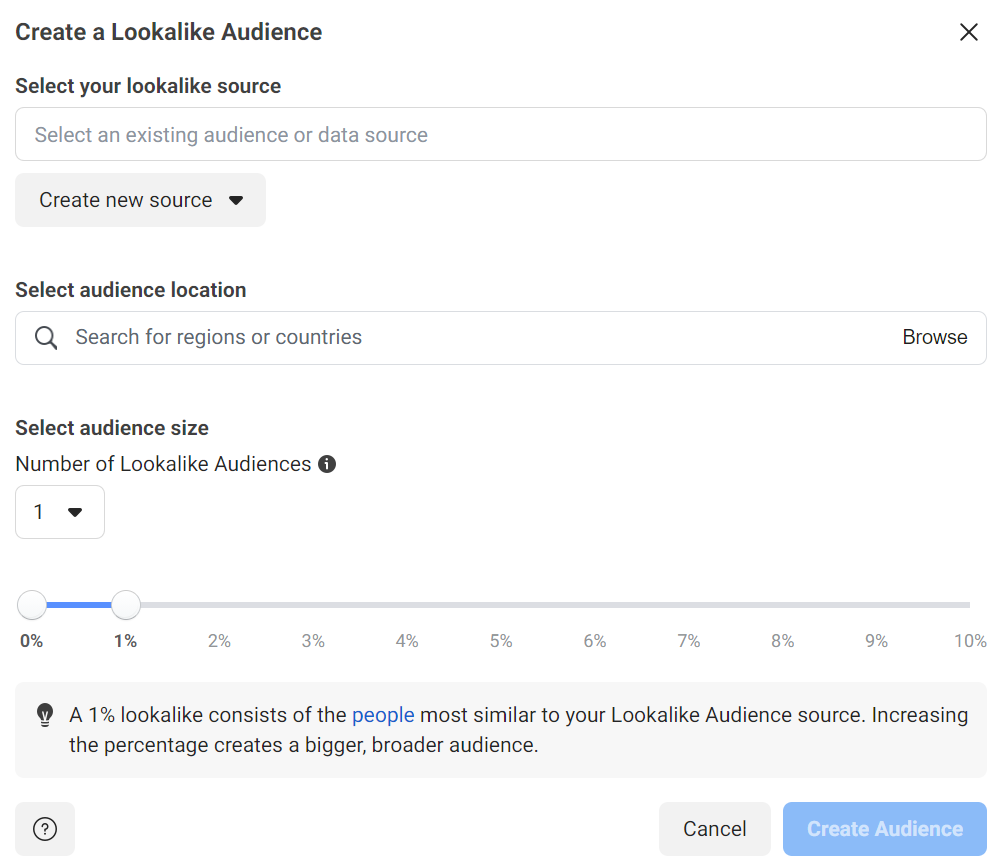
First, you will need to choose a basis for a lookalike. As a source, Facebook recommends using a custom audience that has between 1,000 to 50,000 users in it. It is also important to pay attention to the quality of the source. The lookalike audience based on the custom audience that has shown great results will definitely perform better than the one based on the custom audience the outcome of which was not as good.
Next, Facebook asks you to select one or several locations. The lookalike audience will consist of users in these countries. However, due to recent lookalike audiences update, for some, it is not possible to select a country at this point anymore. Instead, the location applied on the Ad Set level will be used.

In this case, the lookalike audience creation window will look like this:
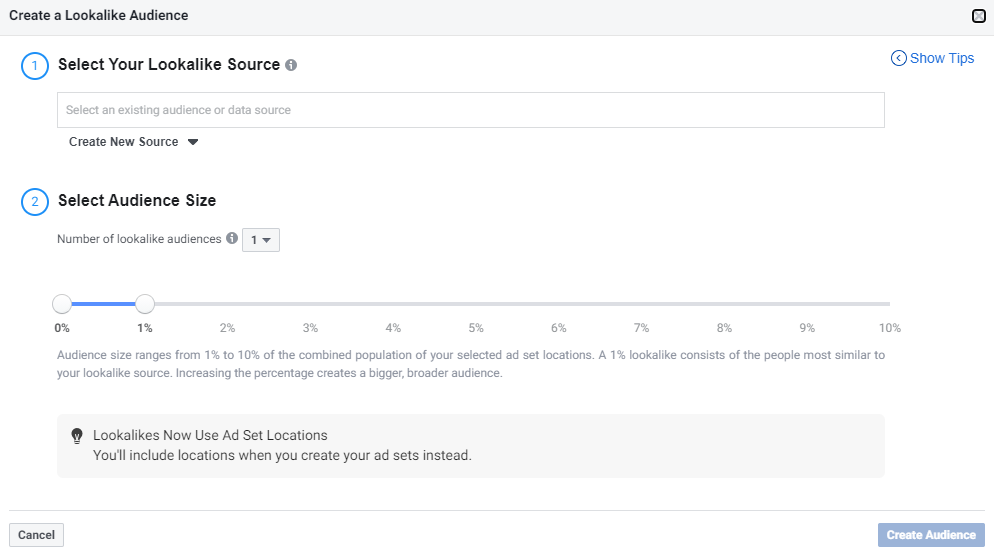
There’ll still be an option to select affinity percentage. The lower it is, the higher the similarity. However, the size of the audience will be smaller, and vice versa. If the size of the audience is more important for you, select a bigger percentage. In case you aim at targeting people most similar to your existing customers, a lower percentage is your choice.
After all the steps are followed, click “Create Audience”. Be ready that the process of creation may take up to 24 hours since it is a complicated procedure dealing with a large number of users. Also, lookalike audiences refresh every 3-7 days as long as you are targeting your ads with them. To check the date of the last update, proceed to the Audiences section and check the Availability column.
Tips for using Facebook lookalike audiences
If you already use lookalike audiences in your marketing strategy, you can use the following ideas to improve their performance. If you are just about to use them for the first time, these recommendations will help you launch a profitable campaign.
- The key factor for creating an excellent-performing lookalike audience is to base it on the right source audience. For instance, if you are trying to drive up purchases, use the custom audience with the highest conversion rate. Remember that the lookalike audience based on 500 loyal clients will show better results than the one based on a bigger but less relevant audience.
- The source audience must be up-to-date. More likely, there will be no point in using a list of clients you had 10 years ago. Your product or service must have developed throughout this time, your audience has been growing and changing, and so has your client base. Make sure that the list you would like to use as a source is relevant, and so will be the lookalike based on it. Of course, it greatly depends on the kind of product. If you have a list of long-term loyal clientele, it won't harm to use it.
- Different sizes of lookalike audiences may be used successfully for different objectives. Even if a 10% lookalike audience is less exact than a 1% one, it can still be effectively utilized. If your objective is reach, go large. On the other hand, for similarity, aim for a smaller audience.
- It won’t hurt to test your lookalike audience against an interest-based one. Sometimes, depending on various factors such as the way the audiences have been created, the budget, or the schedule of the ad campaign, a saved audience may show better results. Such an outcome is impossible to predict without proper testing.
- If you want to narrow down your lookalike audience or make it more specific, you can always apply additional filters on the Ad Set level such as age, gender, interests, and behaviors.
Conclusion
Lookalike audiences are a powerful tool unfortunately neglected by a lot of advertisers. However, it has a great potential for increasing brand awareness, driving traffic, and generating sales. After reading this article, you now have all the knowledge you need to launch an ad campaign using lookalike audiences. We hope that your first experience with such a campaign goes well and you are able to achieve the desired objective.

